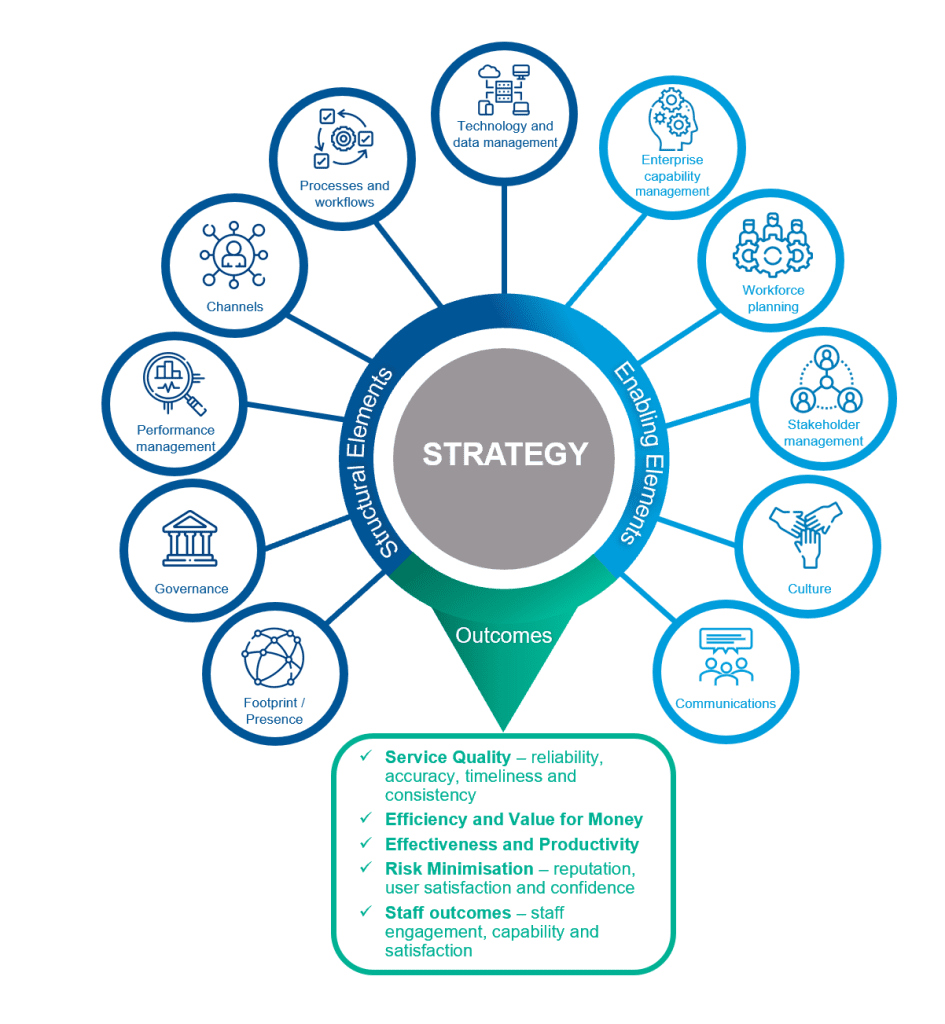Wondering why your latest restructure or organisational redesign wasn’t successful?

Organisational redesign
Are you scratching your head, perplexed why your latest organisational redesign hasn’t yielded all the benefits that were so emphatically promised? Why some of the pain points have disappeared, but the vast majority remain, and you and your team feel more fatigued than ever before?
Operating models are complex. They require consideration of the whole operating environment, including the organisation’s history, where it is now and where it wants to be! But too often critical elements are not given the attention and investment they deserve, or worse, they are neglected altogether. As a result, leaders fail to deliver the benefits they’ve promised and enthusiasm for a new paradigm is replaced by disillusionment, distrust, and lethargy.
Organisational redesign is far more than calculating the right number of FTE ‘boxes’ and identifying reporting lines ‘lines’. Whilst that may make it clear who to turn to when you need a remuneration review, it does little to address requirements for workforce and employee wellbeing and sustainability; connection, collaboration and collegiality; talent acquisition and capability development; compliance; and continued improvement and evolution of services and outcomes. Ultimately, these are the factors that will determine your capacity to achieve your mission and strategic priorities.
Effective organisational redesign carefully considers how each element in the organisation’s broader operating environment can work in system to bring its strategy to life. It considers hard and soft elements, spanning structure, processes and people.
Grosvenor’s Operating Model Framework distils all the noise into 11 key elements. When these work in concert with one another, the pitch is perfect to achieve the most important outcomes.

But with so many elements, is it possible to address all of them at once?
Whilst any organisational redesign should critically assess the performance of each element and identify how it should interact with other elements to support the overarching strategy, rarely can focus and resources stretch across all elements concurrently.
To quote George Orwell, “all [elements] are equal, but some [elements] are more equal than others”.
From our experience supporting organisational redesigns across corporate services, tertiary education, utility, agriculture, healthcare, emergency management and non-for-profit sectors, we know that four elements have a leading impact on organisational value and should be prioritised:
Governance
The structures, systems and processes employed by leaders and the organisation to support accountability, transparency, integrity and decision-making
Culture
The shared values, beliefs, behaviours and attitudes that create the character and personality of the organisation. A strong culture underpins employee engagement, retention, satisfaction and performance
Workforce planning
The approach to balance workforce supply and demand and establish a high-performance workforce through optimising the productivity and performance of employees and ensuring they have the right resources and information at the right time
Enterprise capability management
The strategic focus and investment to understand gaps between existing and required organisational capabilities, identify talent management interventions and support ongoing employee and organisational capability uplift.
Focusing effort and resources on these four elements in the first instance will build connective tissue. It will strengthen relationships, cultivate a sense of belonging, and employees will feel seen and valued. This is more important than ever given the dislocation to organisational culture, cohesion, connectivity, trust and stability presented by local, national and global events over the last few years and the ensuing Great Attrition.
And importantly for the organisational redesign effort, it will provide the basis for developing a binding narrative that the redesign is necessary and transition pains worthwhile.
If you want to know more or share your experiences undertaking organisational redesign, please reach out to our experts.







 We are all about sharing our expertise to help you and your organisation be the best it can be.
We are all about sharing our expertise to help you and your organisation be the best it can be.